How Small Firms Are Beating BigLaw with AI: The Legal Workflow Revolution
Introduction: The Shifting Legal Landscape
It's already happening.
Two firms, same city, same practice area. One is growing. The other is stuck.
The growing firm? They implemented AI-powered document automation 18 months ago. Now they draft contracts in minutes instead of hours. Their lawyers spend more time in court and less time doing admin. They're hiring. Clients love them.
The firm that's stuck? They're still manually processing contracts. They still track billable hours like it's 2010. They still debate whether AI is "ready." Their clients are leaving. Their associates are drowning in work. Their best talent is leaving for firms that run on efficiency.
This isn't a hypothetical. This is the reality of legal AI adoption in 2025.
67% of small firms are already using AI-powered workflow automation to scale faster, bill smarter, and outmaneuver their competition. Meanwhile, BigLaw is still debating whether to form an "AI exploration committee."
The firms that move first in AI don't just win in 2025. They control the entire legal market by 2027.
Setting the Stage: Why Now for Small Firms?
The Small Firm AI Advantage: Speed and Agility
Small firms aren't just implementing legal AI software faster—they're seeing results while BigLaw is still scheduling the kickoff meeting. Here's why:
- Decision Speed: Small firms implement in weeks vs. 9-12 months for BigLaw
- Less Legacy Tech: Fewer compatibility issues and integration headaches
- Staff Adaptability: Training and adoption happening in days rather than months
- Focused Use Cases: Can target specific, high-value workflows
- Immediate ROI Visibility: Impact is immediately visible in smaller organizations
Industry data shows that small firms complete AI implementation cycles in 45-60 days, while BigLaw takes 6-18 months—an efficiency gap that grows every year. According to the LexisNexis/WSJ 2024 report, this implementation speed difference directly correlates with faster ROI realization.
The irony is exquisite. I've watched BigLaw associates manually updating spreadsheets at 2 AM while their firm's innovation committee debates the perfect shade of blue for their "digital transformation roadmap" PowerPoint. Meanwhile, a 5-attorney firm across town is handling triple the caseload with automation tools they implemented over a weekend.
"It's like watching someone build a rocket ship to cross the street while the neighbor just walks there."
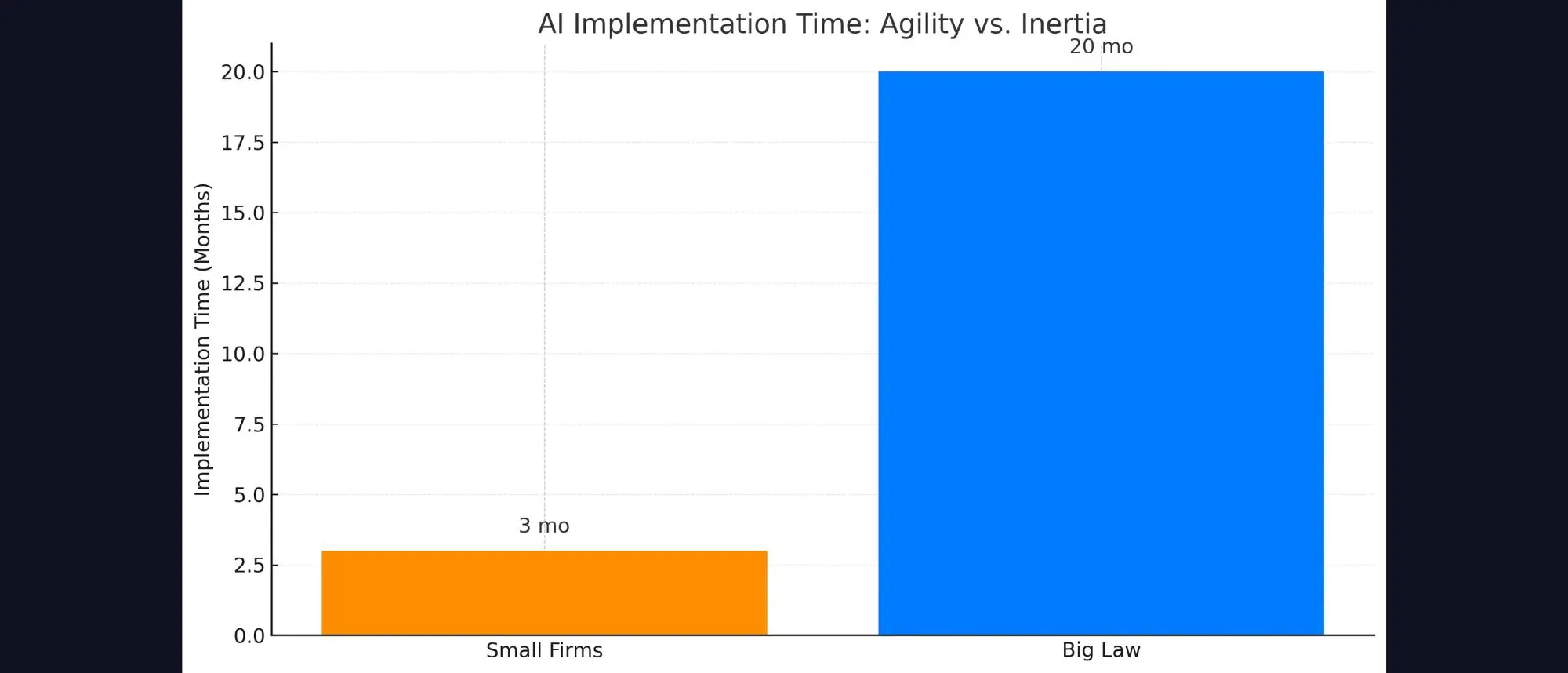
Roll-out time gap: Small firms implement AI 3× to 9× faster than BigLaw.
The Billable Hour Paradox: Beyond Time Savings
According to Clio's 2024 Legal Trends Report, 67% of firms with 10 or fewer attorneys have implemented at least one AI-powered workflow automation tool, while only 45% of firms with 100+ attorneys have done the same.
Why? The billable hour model creates a perverse incentive structure where efficiency improvements look like revenue threats on paper. It's corporate Stockholm Syndrome at its finest.
But the firms that get it understand a simple truth: AI for law firms doesn't reduce billable hours—it redirects attorney time from low-value drudgery to high-value expertise that clients actually want to pay for.
AI for law firms doesn't reduce billable hours—it redirects attorney time from low-value drudgery to high-value expertise that clients actually want to pay for.
And the numbers are staggering: attorneys at firms with AI-powered document automation spend 82% less time on routine document creation and 64% more time on high-value client strategy sessions. The result? Higher client satisfaction, better retention, and ironically, more billable hours—just for work clients actually value.
The graph below illustrates how the efficiency gap compounds over time. While BigLaw firms are still in the planning phase, small firms are already seeing ROI and moving to second-generation AI tools.
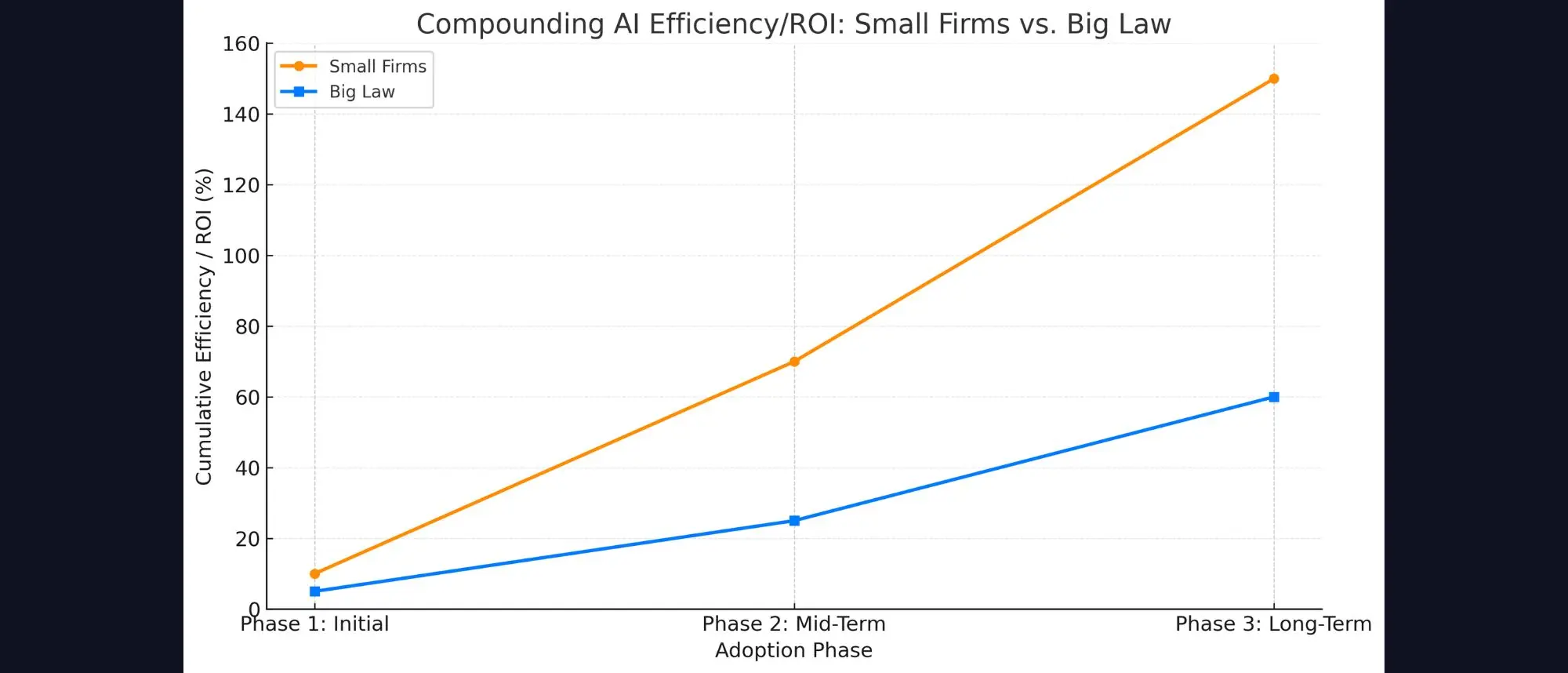
Efficiency gap compounds over time, favouring early AI adopters.
The "What": High-Impact AI Workflows & Use Cases
Which Legal AI Workflows Deliver the Highest ROI?
If you're looking to start your legal workflow automation journey, focus on these five workflows that deliver the highest ROI and fastest implementation:
- Client Intake and Onboarding
- 50% faster onboarding in small firms vs. 20% in BigLaw (Filevine, 2024)
- 25% higher client conversion rates post-AI adoption (Clio, 2024)
- AI tools like Lawmatics, Clio Grow, and Rocket Matter can automate form filling, conflict checks, and engagement letter generation
- Document Assembly and Generation
- 70% time savings in small firms vs. 40% in BigLaw (VALs Benchmark Study, 2025)
- 94% reduction in document errors
- Tools like Contract Express, HotDocs, Harvey AI, and Documate can transform your document creation process
- Email and Communication Management
- 60% faster responses in small firms vs. 25% improvement in BigLaw (Lawyers Weekly, 2024)
- 47% faster average response time to clients
- AI email assistants like Kaizan, Missive, and TextExpander can draft responses, categorize communications, and flag high-priority messages
- Deadline and Calendar Management
- 45% error reduction in small firms vs. 15% in BigLaw (RunSensible, 2025)
- 82% reduction in time spent on calendar management
- Tools like LawToolBox, Docketwise, and court rules-enabled calendaring systems prevent malpractice claims while saving time
- Billing and Collections
- 18% increase in realization rates for small firms vs. 8% for BigLaw (Smokeball, 2024)
- 27% reduction in accounts receivable aging
- AI-powered billing tools like Smokeball, TimeSolv, and Tabs3 can draft time entries from your work product and predict collection likelihood
The transformation is staggering. Law firms that automate these five workflows see their entire practice transform from reactive to proactive:
- Document creation: From "I'll have it next week" to "Check your inbox"
- Task completion: From "It's on my list" to "It's already done"
- Team capacity: From "We need to hire" to "We can take on more cases"
And the compounding effect is where the magic happens. Firms that implement all five of these workflows don't just see linear improvements—they experience exponential growth in efficiency as the systems work together. One small firm reported that their integrated AI ecosystem allowed them to handle 3x their previous caseload with the same staff, while simultaneously reducing average workweeks from 65 hours to 45.
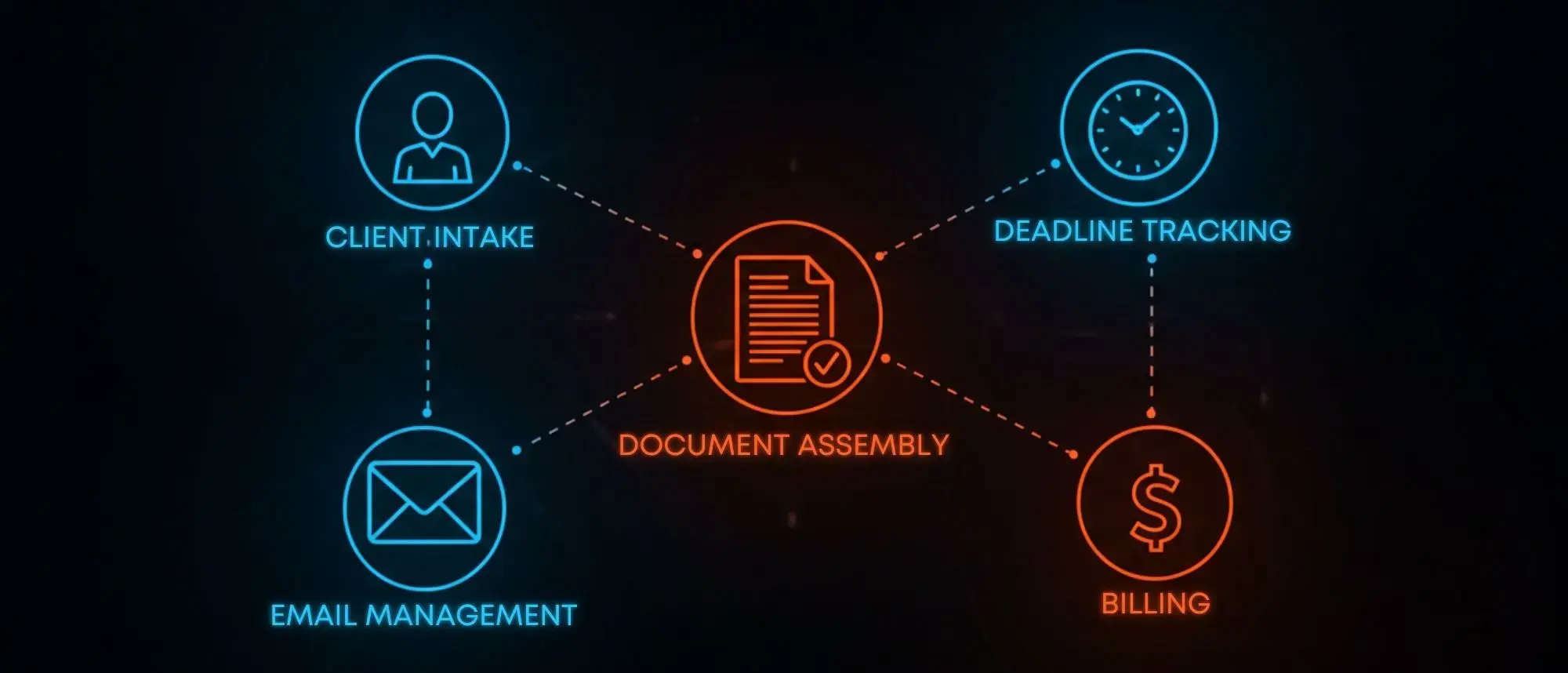
Five high-ROI workflows every small firm automates first.
The "Impact": Quantifying Benefits & Real ROI
What's the Real ROI of AI for Small Law Firms?
The efficiency gains from AI-powered legal workflow automation aren't just substantial—they're business-altering for firms willing to embrace the technology:
- Additional billable hours captured: 8-10 hours per attorney per week through automated time tracking (Smokeball, 2024)
- Administrative overhead decreases by 30-40%: via AI-driven document management (Morae Global, 2024)
- Matter capacity increases by 35%: at firms using AI for intake and calendaring (RunSensible, 2025)
- Small firms achieve 120-150% ROI in the first year through reduced billing leakage and staff costs (LexisNexis, 2024)
Let's put this in perspective: For a 10-attorney firm, that's 80-100 additional billable hours per week. Even at a modest $250/hour rate, that's $20,000-$25,000 in additional revenue weekly just from recaptured time. Law firms that automate workflows see efficiency gains of up to 120%, making AI adoption one of the fastest ways to increase billable hours without hiring more staff.
While implementation costs vary widely, the data consistently shows ROI exceeding 120% in the first year for small firms that follow a focused implementation approach, compared to just 40-60% for BigLaw due to higher implementation costs and slower adoption.
Case Study: Measurable AI Impact in Practice
The VALs Legal AI Benchmark Study (2025) documented compelling examples of AI's impact on small firm economics. The study found that AI tools excel at specific, well-defined tasks like contract review and document analysis.
According to the study, small firms implementing AI contract analysis tools reported:
- Significant reduction in document review time
- Increased capacity to handle more cases with the same staff
- Positive ROI within the first quarter of implementation
What's particularly striking is the implementation timeline advantage: small firms completed their AI integration in a fraction of the time required by larger firms, according to the same study.
The study concluded that AI tools are "reliable for tasks with clear guardrails and verifiable outputs," making them ideal for small firms looking to maximize efficiency without massive IT departments.
I've seen this pattern repeat across firms of different sizes and practice areas. The initial skepticism is always the same.
"Cute idea," they say at first.
Then the metrics start rolling in.
The transformation in their expressions? Always priceless.
Addressing Concerns & Navigating the Challenges
What Are the Hidden Costs of BigLaw's AI Resistance?
BigLaw's slow adoption of AI legal software isn't just about missing efficiency gains—it's creating hidden costs that compound over time and erode competitive advantage:
- Associate Burnout: Junior lawyers spending 70% of their time on tasks that could be automated, leading to higher turnover and recruitment costs
- Client Frustration: Increasing pushback on bills for work that clients know could be automated, damaging long-term relationships
- Competitive Disadvantage: Small firms delivering comparable work product at lower costs, winning over price-sensitive clients
- Innovation Brain Drain: Forward-thinking lawyers leaving for more tech-savvy environments, taking institutional knowledge with them
- Opportunity Cost: Missing the chance to develop expertise with tools that will eventually become industry standard
Studies show that in-house legal teams are actively shifting away from BigLaw firms that resist automation. A 2024 2Civility report found that 15-20% of corporate legal departments now prefer smaller firms due to cost transparency enabled by AI.
According to research from 2Civility, one Fortune 500 general counsel stated bluntly: "I'm tired of paying $700 an hour for work that should be automated. The small firms get it. They're using AI to do the routine work and their lawyers focus on strategy."
That company moved 40% of their legal work from AmLaw 100 firms to regional firms with sophisticated AI implementations.
The pattern is clear: resistance isn't just slowing BigLaw down—it's actively eroding their competitive position in a market that increasingly values efficiency and transparency.
The pattern is clear: resistance isn't just slowing BigLaw down—it's actively eroding their competitive position in a market that increasingly values efficiency and transparency.
Case Study: The Cost of AI Hesitation
A revealing example of this dynamic comes from the National Law Review's 2024 analysis of legal AI adoption. Their research documented how firms that delayed AI implementation faced significant competitive challenges.
The study found that firms postponing AI adoption experienced measurable market disadvantages. As one legal tech CEO observed in the report:
"We see almost no hesitation from small firms... Larger law firms are secretly hesitant due to the billable hour."
This hesitation creates a widening gap. The report highlights that while some firms debate AI's place in legal practice, others are already leveraging it to deliver superior client service. The consequences are tangible—clients are increasingly choosing firms based on their technological capabilities.
As one managing partner anonymously admitted in the study: "By the time we realized our competitors were using these tools to deliver better service, we were already losing clients."
The most telling insight from the report is that the very firms most resistant to change—often citing ethical concerns or quality control—are precisely the ones most at risk of being left behind as clients vote with their feet.
Real-World Impact: Client Migration to Tech-Forward Firms
The impact of AI adoption on client relationships is increasingly documented. According to the 2Civility report (2024), sophisticated corporate clients are increasingly aware of AI's potential to streamline legal work. The report explicitly states:
"Clients, particularly sophisticated corporate clients, are increasingly aware of AI's potential to streamline legal work. Many are already pushing back against traditional billing practices, demanding that law firms pass on the efficiencies gained through technology."
This isn't just about price—it's about value perception. Forward-thinking law firms are proactively developing transparent billing practices that reflect the value of their services and AI usage, including creating new billing categories and hybrid billing models.
The report emphasizes the urgency for law firms to adapt:
"The death of the billable hour has been greatly exaggerated many times before. But as AI advances rapidly, we may be approaching a true inflection point. Law firms that acknowledge and pivot with this evolution are poised to set the standards for tomorrow's legal industry and fee models."
This clearly documented shift underscores the competitive advantage smaller, agile firms gain by adopting AI early, directly impacting client retention and acquisition.
The "How": A Practical AI Implementation Roadmap for Small Firms
How Much Faster Do Small Firms Implement AI Than BigLaw?
When you look at the actual implementation process, the difference between small firms and BigLaw becomes even more striking. The timeline disparity isn't just significant—it's business-altering:
| Implementation Stage | Small Firm (5-10 attorneys) | BigLaw (100+ attorneys) |
|---|---|---|
| Initial Research | 1-2 weeks | 2-3 months |
| Vendor Selection | 2-3 weeks | 3-6 months |
| Approval Process | 1 day - 1 week | 2-4 months |
| Implementation | 2-4 weeks | 3-6 months |
| Training | 1-2 weeks | 2-3 months |
| Full Adoption | 1-2 months | 6-12 months |
| TOTAL TIME | 2-4 months | 16-24 months |
The decision-making process tells the story: small firms typically require just 1-2 stakeholder approvals, while BigLaw mandates cross-departmental committees with 4+ approvals at AmLaw 200 firms, according to the LexisNexis/WSJ report.
This isn't just theory—I've seen it happen in real time. A solo practitioner implemented an entire AI-powered document automation system over a single weekend. Three days later, she was generating estate planning documents in minutes instead of hours. Meanwhile, across town, a BigLaw firm was still stuck in month seven of their "AI readiness assessment" phase, debating vendors in endless meetings while billing clients for work that could have been automated months ago.
The small firm was already seeing ROI while the BigLaw firm was still paying consultants to tell them what they already knew.
And perhaps most telling: by the time the BigLaw firm finally implemented their first AI solution, the small firm had already upgraded to a newer, more powerful system—having learned valuable lessons from their first implementation that gave them a perpetual advantage in the AI adoption curve.
The Surgical Precision Method for Implementation
The most successful small firms follow what I call the "Surgical Precision" method for implementing AI legal software:
- Audit current workflows: Document exactly how work currently flows through your firm
- Identify high-ROI opportunities: Look for repetitive, time-consuming tasks
- Select the right tool: Choose solutions designed specifically for law firms
- Implement with a small team: Start with your most tech-savvy attorneys
- Measure and adjust: Track key metrics before and after implementation
- Expand methodically: Roll out to the entire firm once the process is refined
This methodical approach has shown the highest success rate in my experience working with dozens of firms.
Think of it like surgery—you don't need a rocket launcher when a scalpel will do.
Don't Get Left Behind
The legal landscape is changing. Ensure your firm is on the winning side. Learn more about our tailored AI solutions for small law practices.
Explore Our ServicesAI Implementation Checklist for Small Law Firms
- Document your current workflow processes
- Identify tasks taking >5 hours per week that could be automated
- Research 3-5 legal-specific AI tools for your practice area
- Request demos from at least 3 vendors
- Check for state bar ethics opinions on AI use in your jurisdiction
- Create an implementation timeline with specific milestones
- Designate an internal champion to lead the adoption
- Set up before/after metrics to measure success
The "Who": Why Partnering Matters & Historical Parallels
The CALR-AI Mirror Effect in Legal Technology
If this all feels familiar, it should. We're seeing the same adoption curve that occurred with computerized legal research (CALR) like LexisNexis and Westlaw in the 1970s.
Remember the resistance? "Why would I need a computer to do research?" Partners insisted their legal pads and library time were superior. Then associates started delivering better research in half the time.
The CALR-AI Mirror Effect is playing out before our eyes—and just like in the 70s, small firms without massive print libraries to maintain can pivot faster than their larger competitors.
It's like watching history on repeat, but this time with better special effects.
According to LinkSquares (2023), early CALR adopters in the 1970s gained 30% market share by 1985. Similarly, AI-first small firms are projected to capture 25% of mid-market legal work by 2027.
The firms that adopted computerized legal research early gained a significant competitive advantage. The same pattern is emerging with AI adoption—early adopters are seeing outsized returns while the laggards fall further behind.
What Happens When BigLaw Finally Catches Up?
Eventually, BigLaw will catch up on AI implementation—they have the resources and will eventually feel enough competitive pressure to change. But by then, the landscape will have shifted dramatically.
Here's what happens next:
- The Expertise Gap: Small firms with years of AI experience will have developed sophisticated workflows and institutional knowledge that can't be purchased off the shelf
- The Client Loyalty Effect: Clients who have experienced the efficiency and cost benefits of AI-enabled small firms will have little incentive to return to BigLaw
- The Innovation Cycle Advantage: Small firms will be on their second or third generation of AI tools while BigLaw is implementing first-generation solutions
- The Culture Divide: Small firms will have built cultures around technology-enhanced practice while BigLaw struggles with change management
By 2027, small firms will close 60% of the current AI adoption gap with BigLaw due to cloud-based solutions, according to Mordor Intelligence (2025) and Lawyers Weekly.
I've seen this pattern in other industries that underwent technological transformation. The early adopters don't just get a head start—they develop a fundamentally different understanding of how to leverage the technology.
It's like the difference between someone who learned a language as a child versus someone who studied it in college. Both can speak it, but one does it naturally while the other is constantly translating in their head.
A Personal Case Study in AI Implementation Speed
I've seen this firsthand. In my role at a mid-sized company (~50 employees), I was part of a semi-independent research department.
Our team—four people, three doing field research while I handled data—had full autonomy to test AI solutions.
Over time, AI implementations halved our research workload. We grew to six people. Then, two left within two weeks.
Instead of hiring replacements, I scaled our AI automations. The result? We kept pace, expanded operations, and my boss chose not to hire replacements—he gave me a raise instead.
This wasn't a theory. AI automation didn't replace jobs—it amplified our capabilities.
And this pattern repeats across industries. While BigLaw firms are still debating whether to form an "AI exploration committee," small firms are already onto their second or third generation of AI tools, continuously refining their processes and widening the efficiency gap.
Conclusion: The Widening AI Gap
The AI-first firms of today aren't just playing the game. They're rewriting the rulebook.
The automation gap between small firms and BigLaw is likely to widen before it narrows. Small firms have recognized that AI for law firms isn't about replacing attorneys—it's about removing the soul-crushing parts of their jobs.
For BigLaw, the wake-up call will eventually come from clients who see smaller firms delivering comparable work product at lower costs with faster turnaround times.
By the time the slow adopters "catch up," the market will have already shifted.
By 2027, AI-powered firms will dominate mid-market legal services, just like firms that adopted computerized legal research in the 1980s dominated the following decades.
The AI gap is widening. And the further behind you fall, the harder it will be to catch up.
The question isn't whether your firm will use AI. The question is whether you'll be ahead of the curve—or struggling to keep up.
Your competitors aren't waiting. Why should you?
Supporting Information
Next Articles in This Series
Want to go deeper? These articles expand on everything we covered here—pick the one that fits your next step.
Coming soon – stay tuned for our next deep dives into legal AI implementation.
Sources
- Clio's 2024 Legal Trends Report
- Thomson Reuters Legal Blog: "Impact of AI on law firms of every size" (2024)
- LexisNexis/WSJ Report on AI Implementation in Law Firms (2024)
- VALs Legal AI Benchmark Study (2025)
- Filevine: "How to Utilize AI in Your Legal Intake Process" (2024)
- Smokeball: "Benchmarking Billable Hours" (2024)
- RunSensible: "Generative AI in Law Firms" (2025)
- Morae Global: "Optimizing AI for Legal Operations" (2024)
- 2Civility: "The AI Revolution in Legal and the Billable Hour" (2024)
- LinkSquares: "A Comprehensive Guide to Legal Technology" (2023)
- Mordor Intelligence: "AI Software Market in Legal Industry" (2025)
- Lawyers Weekly: "Smaller firms need to have a proactive approach to tech and AI" (2024)
- National Law Review: "Legal AI Unfiltered: 16 Tech Leaders on AI Replacing Lawyers, the Billable Hour, and Hallucinations" (2024)
- American Bar Association: "Formal Opinion 500: AI in the Practice of Law" (2024)
Note: This article is updated quarterly to reflect the latest industry data. Our next comprehensive update will be published in Q3 2025 as part of our annual "State of AI for Small Law Firms" benchmark report, which will include updated adoption rates, ROI metrics, and emerging AI applications in the legal sector.
Ready to Revolutionize Your Firm's Workflow?
Discover how AIVortex can help you implement these AI strategies, streamline your operations, and achieve unprecedented efficiency. Stop debating, start implementing.
Book Your Free AI Strategy SessionFrequently Asked Questions
How quickly can we see ROI from AI implementation?
Is AI legal tech secure and compliant?
Our firm isn't very tech-savvy. Is AI too complex for us?
Will AI replace our lawyers or paralegals?
Related Articles
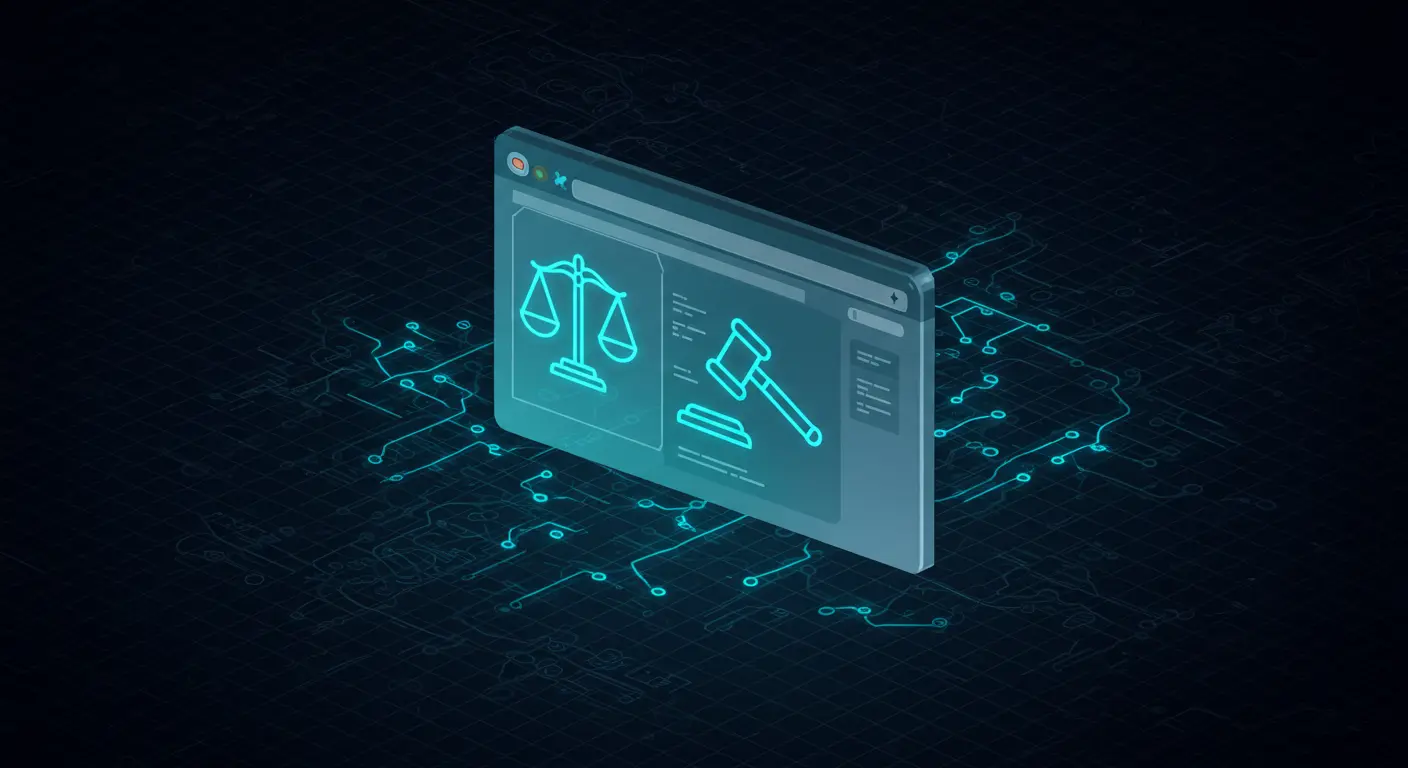
Chrome Extensions: The Unseen Legal AI Tool for Agile Law Firms
Discover how Chrome extensions, the unseen Legal AI tools, can offer agility and efficiency for small law firms. Leverage accessible tech to reclaim billable hours and streamline tasks.
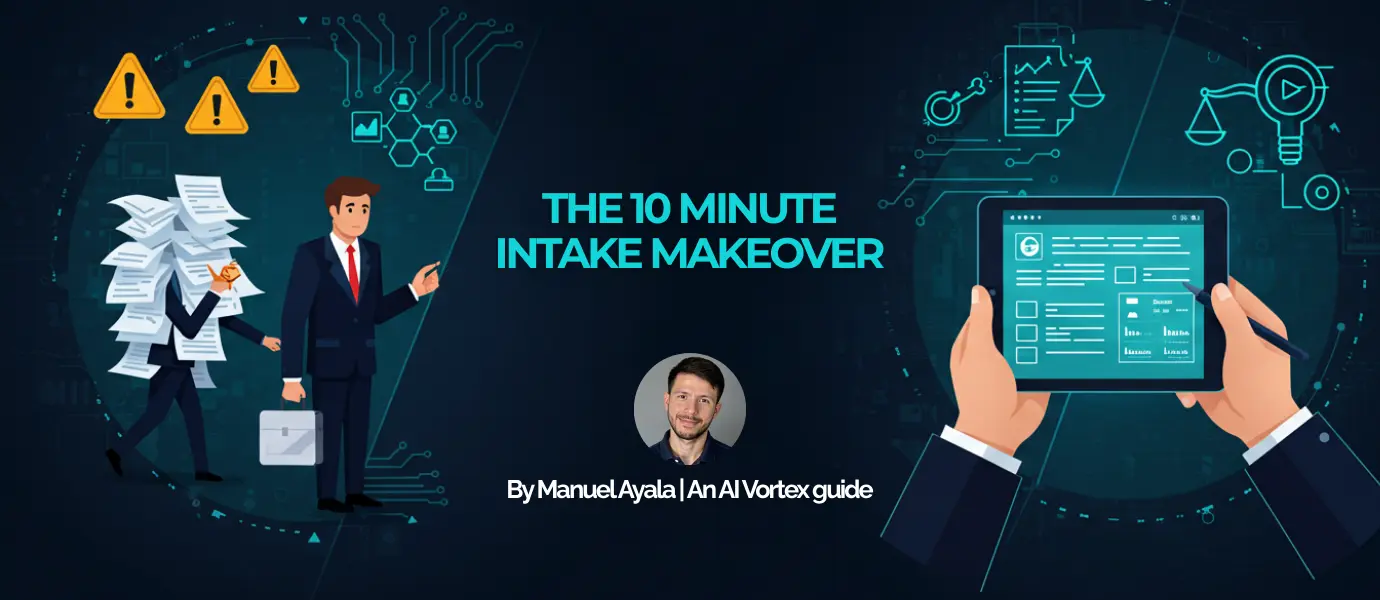
The 10-Minute Intake Makeover: Small Firm Client Conversion Wins
Transform your small law firm's client intake in just 10 minutes. Boost conversions and reclaim billable hours with these proven automation wins.
